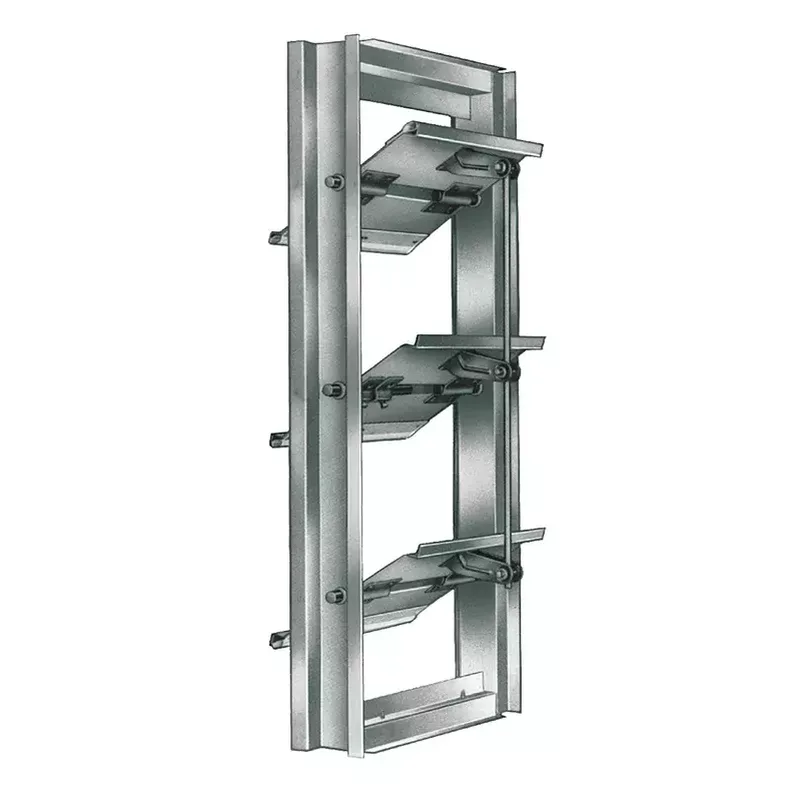Maintaining a comfortable and safe environment within a building is a complex task, but it's one that's made easier with the help of essential equipment like louvers and dampers. As crucial components of your HVAC system, they play an integral role in controlling airflow and maintaining optimal indoor air quality.

However, like all mechanical equipment, dampers and louvers require regular upkeep to function at their best. This article delves into the world of damper maintenance and louver maintenance and explains why these tasks are essential and how to carry them out effectively.
Understanding Dampers and Louvers
Before diving into maintenance, it’s vital to understand what dampers and louvers are and the roles they play in HVAC systems.
Dampers are essentially valves in your HVAC system that can be opened or closed to control the flow of air. They play a crucial role in balancing air distribution, directing airflow to areas that need it most, and preventing airflow to areas where it's not required. Dampers come in various types, including control dampers and fire dampers. Some dampers are a part of daily operation, and some dampers are only used in case of emergency.
Louvers, on the other hand, are installed in doors, walls, or windows to allow natural ventilation into a room while keeping out undesirable elements like rain, noise, or unwanted light. Louvers are designed with slats that can be either fixed or adjusted to control the volume and direction of airflow. They are used in a variety of applications, from residential properties to industrial facilities.
Louvers are often placed at the intake or exhaust opening for ductwork. It is important to protect these openings from rainfall. If water infiltrates the duct, it can damage HVAC components or leave mold and mildew throughout the ductwork.
The Importance of Damper and Louver Maintenance
Like any other mechanical system, dampers and louvers can wear down over time, which can lead to inefficiencies or even failures. A broken control damper can lead to more serious damage as your system tries to move air. Establish a regular maintenance schedule for dampers and louvers to prevent such issues. A maintenance schedule will help ensure optimal performance. Regular maintenance can also extend the lifespan of these components. Dampers used as part of a building's fire and smoke control system must be inspected and maintained according to the local requirements. Proper damper and louver maintenance keeps your building breathing properly.
Damper Maintenance: Your Responsibilities

Damper maintenance begins with regular inspections. Check for signs of wear and tear, such as rust, loose components, or issues with the damper's operation. Actuators should be inspected for smooth operation, and any issues should be addressed promptly to prevent further damage.
Aside from visual inspections, dampers should be cleaned regularly. Over time, dust and debris will build up and hinder the damper’s operation. This build-up will also reduce the damper’s efficiency. A simple cleaning can often restore a damper to full functionality. Manufacturers will often provide a general maintenance guide with a list of recommended cleaning solutions. Remember to follow the manufacturer's instructions when cleaning dampers to avoid causing unintentional damage.
Dampers with triggering mechanisms, like fire and smoke dampers, must be checked more carefully. The installation must be in good condition and the triggering mechanism, a fusible link for fire dampers, must be pristine. Replace broken or worn mechanisms as needed. The damper itself must also behave as expected when the triggering mechanism is removed. For example, a fire damper must close quickly and without issue when its fusible link is removed. Fire and smoke dampers must be ready to perform in case of an emergency to keep the building and its occupants safe.
Louver Maintenance: Essential Steps
When it comes to louver maintenance, regular cleaning is also a crucial task. Louvers will accumulate dust, dirt, and grime along their blades, which negatively impacts their performance. Louvers on HVAC intakes are particularly susceptible to dirt and debris buildup, as they draw air into the system. A soft brush or a pressure washer on a low setting can be used to clean louvers effectively. Use a lint-free cloth when drying the louver.
Moreover, the moving parts of adjustable louvers should be lubricated regularly to ensure smooth operation. Always use a lubricant recommended by the manufacturer to prevent damage. Additionally, check for signs of corrosion or damage, as these issues can impact the louver's performance. Serious damage to these components will require professional repair or replacement.
Key Issues That Cause Maintenance Needs
Several factors can lead to the need for damper and louver maintenance. Exposure to harsh weather conditions can damage important components in adjustable louvers. Dampers used in areas with corrosive chemicals will need more frequent maintenance to ensure their components are in working order. The accumulation of dust and debris can also hinder performance for louvers and dampers.
It’s important to make sure that water is being shed properly from louvers. Excess water can collect on the louver and cause further issues in the system. Regular maintenance will address these issues to keep your dampers and louvers in top shape.
AWV: Your Damper and Louver Expert
Maintenance is the key to preserving the functionality and extending the lifespan of your dampers and louvers. Regular cleaning, inspections, and prompt repair of any issues will keep your HVAC system in peak condition. A well-maintained HVAC system provides optimal indoor air quality and comfort.
At AWV, we understand the importance of maintaining your HVAC system's critical components. Our range of high-quality dampers and louvers are designed to provide superior performance and durability. Our team of experts is always on hand to provide advice and support for your maintenance needs. Explore our range of dampers and louvers today to discover how we can help you maintain a comfortable and safe indoor environment.
Remember, a well-maintained system is not just about comfort—it's about providing a healthy, productive space for everyone inside. To learn more, reach out to the damper and louver experts at AWV today!





